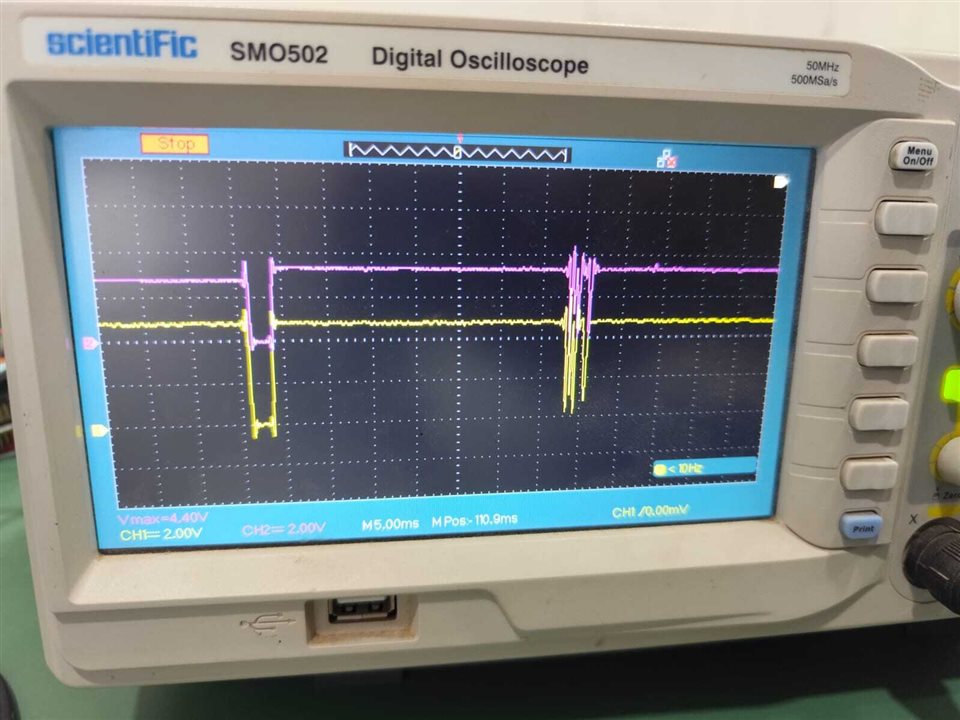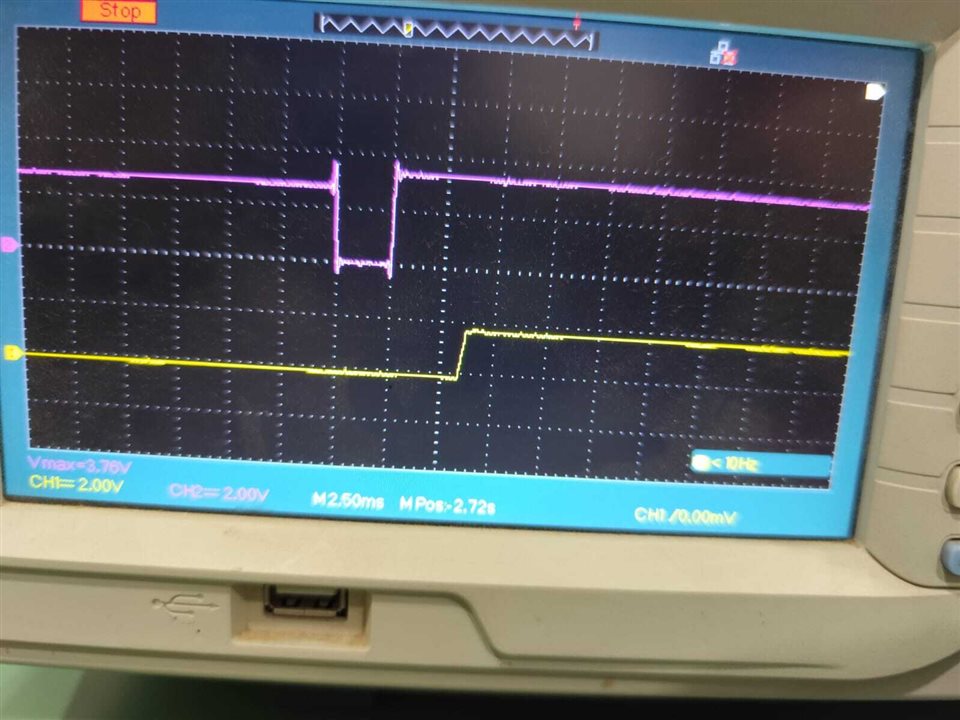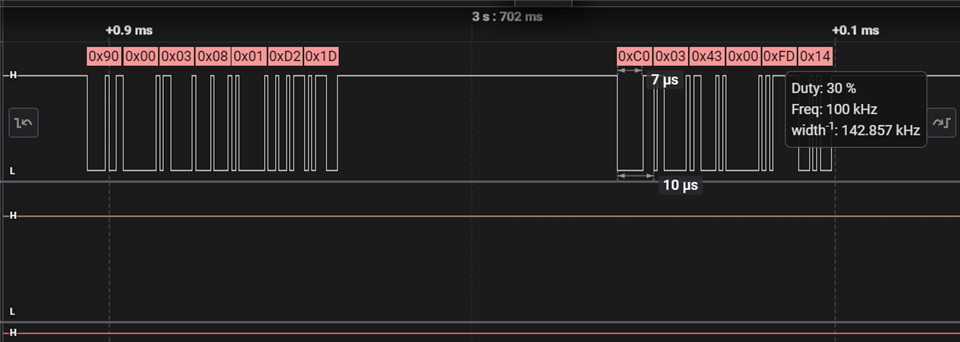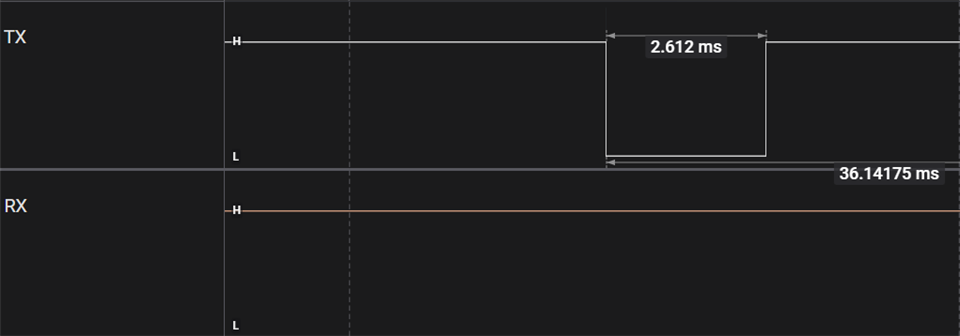Other Parts Discussed in Thread: BQ79616
Tool/software:
Hey TI Experts,
We have developed our bms using bq79616 afe. The bq79616 is communicating directly over UART with a stm32 microcontroller. It is made sure all the hardware requirements are fulfilled like adding a logic level shifter.
Once the MCU is powered on wake up sequence is initiated and the afe is now awake. This is confirmed by measuring the voltage on DVDD i.e. we are getting 1.8V on DVDD.
The baud rate of UART is set at 1Mbps.We are using UART receive interrupt to get the data from the Bq79616 response. After the wakeup process, we do the auto addressing. The following are the auto addressing commands:
0xD0 0x03 0x43 0x00 0xF9 0xD4 //step 1 Dummy broadcast write to sync the DLL
0xD0 0x03 0x44 0x00 0xFB 0xE4 //step 1 Dummy broadcast write to sync the DLL
0xD0 0x03 0x45 0x00 0xFA 0x74 //step 1 Dummy broadcast write to sync the DLL
0xD0 0x03 0x46 0x00 0xFA 0x84 //step 1 Dummy broadcast write to sync the DLL
0xD0 0x03 0x47 0x00 0xFB 0x14 //step 1 Dummy broadcast write to sync the DLL
0xD0 0x03 0x48 0x00 0xFE 0xE4 //step 1 Dummy broadcast write to sync the DLL
0xD0 0x03 0x49 0x00 0xFF 0x74 //step 1 Dummy broadcast write to sync the DLL
0xD0 0x03 0x4A 0x00 0xFF 0x84 //step 1 Dummy broadcast write to sync the DLL
0xD0 0x03 0x09 0x01 0x0F 0x74 //step 2 Enable auto addressing mode by broadcast writing CONTROL1=0x01
0xD0 0x03 0x06 0x00 0xCB 0x44 //step 3 Loop through the total number of boards setting the DIR0_ADDR of each board.(We only have single device connected)
0xD0 0x03 0x08 0x02 0x4E 0xE5 //step 4 Broadcast write everything as a stack device first
0x90 0x00 0x03 0x08 0x01 0xD2 0x1D //step 5 Totalboard = 1, Hence set device as base and top of stack (COMM_CTRL=0x01)
0xC0 0x03 0x43 0x00 0xFD 0x14 //step 6 Dummy broadcast read to sync the DLL.
After this step we are not receiving any response from BQ79616. What could be the issue?
The above steps are verified using both the DSO and logic analyzer.
figure 1 - logic level shifter
figure 2 - wake up signal (DSO)
figure 3 - wake up signal (logic analyzer)
figure 4 - auto addressing (DSO, purple-MCU Tx, yellow- bq79616 Rx)
figure 5 - auto addressing (logic analyzer)
The above mentioned observations have been attached for your reference.
Request you to give your valuable response regarding this issue.
Regards
Ibrahim










